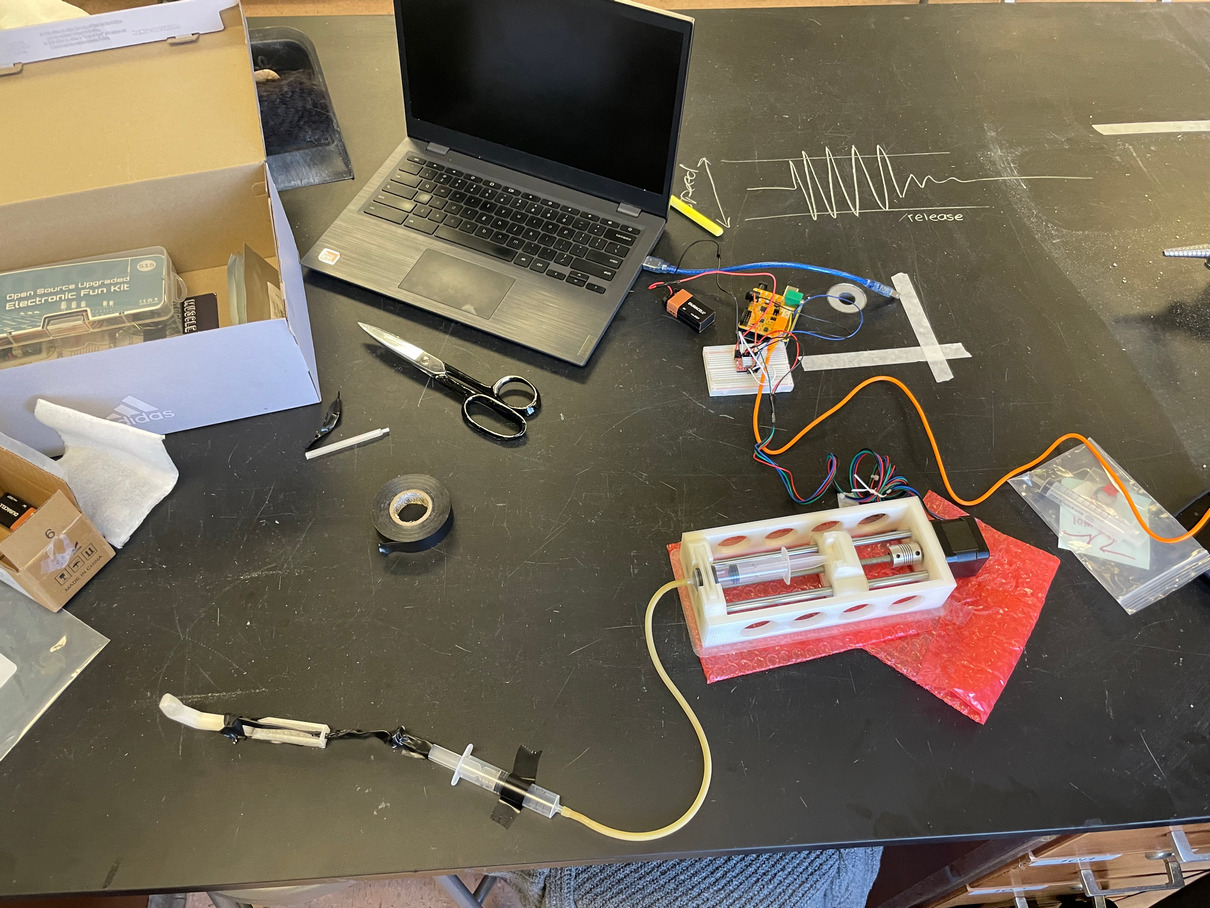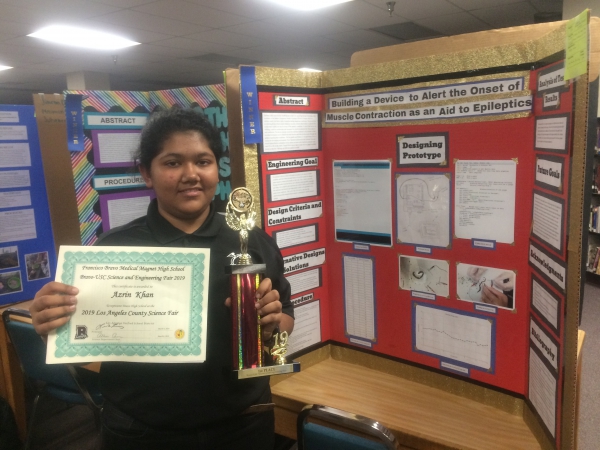-
 StudentsA pump made of two plastic syringes and a pushing block powered by a stepper motor, one of our Muscle SpikerShields and a 3D-printed base — that’s all that Kiley Branan, a high school senior from Indiana, needed to put together a prototype of a finger that you can open and close by flexing your […]
StudentsA pump made of two plastic syringes and a pushing block powered by a stepper motor, one of our Muscle SpikerShields and a 3D-printed base — that’s all that Kiley Branan, a high school senior from Indiana, needed to put together a prototype of a finger that you can open and close by flexing your […] -
 Education— Written by Natalia Díaz — Hi there, it’s Natalia Díaz again with an update to my neuromathematical (yes, such a thing exists!) project. If you don’t remember me, I’m a student of Mathematical Engineering at the University of Santiago de Chile and I’m doing my internship here in BackyardBrains. Since the last time we met (you […]
Education— Written by Natalia Díaz — Hi there, it’s Natalia Díaz again with an update to my neuromathematical (yes, such a thing exists!) project. If you don’t remember me, I’m a student of Mathematical Engineering at the University of Santiago de Chile and I’m doing my internship here in BackyardBrains. Since the last time we met (you […] -
 EducationMusic is a passion, an art, a science, but maybe most importantly… music is fun! Variations of “electronic instruments” can be traced back as early as the late 1700s, but it is no exaggeration to say that the biggest breakthrough was the invention of Synthesizers in the 1950s. This marriage of music and electrical engineering […]
EducationMusic is a passion, an art, a science, but maybe most importantly… music is fun! Variations of “electronic instruments” can be traced back as early as the late 1700s, but it is no exaggeration to say that the biggest breakthrough was the invention of Synthesizers in the 1950s. This marriage of music and electrical engineering […] -
 EducationMy name is Azrin Khan and I am currently a junior (11th grade) in Francisco Bravo Medical Magnet Senior High School in California. My purpose is to build a device which will alert humans when they are going to have muscle cramps, and it will keep a record of the intensity of the cramp and […]
EducationMy name is Azrin Khan and I am currently a junior (11th grade) in Francisco Bravo Medical Magnet Senior High School in California. My purpose is to build a device which will alert humans when they are going to have muscle cramps, and it will keep a record of the intensity of the cramp and […] -
 EducationThe Third Thumb An 8th Grader’s Exploration in DIY Neuroprosthetics Several months ago, a crowdfunded classroom got their hands on several of our neuroprosthetic kits – like The Claw and the Muscle SpikerShield Bundle. This allowed students in Nokomis Regional schools to begin experimenting with hands-on neuroscience experiments! One of the students, 8th grader Kaiden K., was interested in developing a prosthetic, but […]
EducationThe Third Thumb An 8th Grader’s Exploration in DIY Neuroprosthetics Several months ago, a crowdfunded classroom got their hands on several of our neuroprosthetic kits – like The Claw and the Muscle SpikerShield Bundle. This allowed students in Nokomis Regional schools to begin experimenting with hands-on neuroscience experiments! One of the students, 8th grader Kaiden K., was interested in developing a prosthetic, but […] -
 EducationHi everyone! I’m Cristian, a junior at Nido de Aguilas High School in Chile. Aside from math and engineering, which are my main interests, I enjoy playing drums and reading nonfiction. During my internship here at Backyard Brains, I’ve been working on building a musical instrument! It is a modification of our Muscle SpikerShield that measures […]
EducationHi everyone! I’m Cristian, a junior at Nido de Aguilas High School in Chile. Aside from math and engineering, which are my main interests, I enjoy playing drums and reading nonfiction. During my internship here at Backyard Brains, I’ve been working on building a musical instrument! It is a modification of our Muscle SpikerShield that measures […] -
 EducationThis post comes to you from our friends at Biomakespace! They are biohackers and electrophysiology enthusiasts who work and hack with our kits along with inventions of their own! They recently presented and demoed their cool tech at the annual Cambridge Sci ence Festival in Massachusetts. We asked them a couple questions about the event […]
EducationThis post comes to you from our friends at Biomakespace! They are biohackers and electrophysiology enthusiasts who work and hack with our kits along with inventions of their own! They recently presented and demoed their cool tech at the annual Cambridge Sci ence Festival in Massachusetts. We asked them a couple questions about the event […] -
 EducationPh.D. student and friend of Backyard Brains, Brinnae Bent of Duke University, recently hosted a class for seniors participating in the “Osher Lifelong Learning Institute at Duke (OLLI at Duke).” With help from some colleagues at North Carolina State University, she put on an afternoon workshop in Electrophysiology for these lifelong learners. From its website, “OLLI […]
EducationPh.D. student and friend of Backyard Brains, Brinnae Bent of Duke University, recently hosted a class for seniors participating in the “Osher Lifelong Learning Institute at Duke (OLLI at Duke).” With help from some colleagues at North Carolina State University, she put on an afternoon workshop in Electrophysiology for these lifelong learners. From its website, “OLLI […]